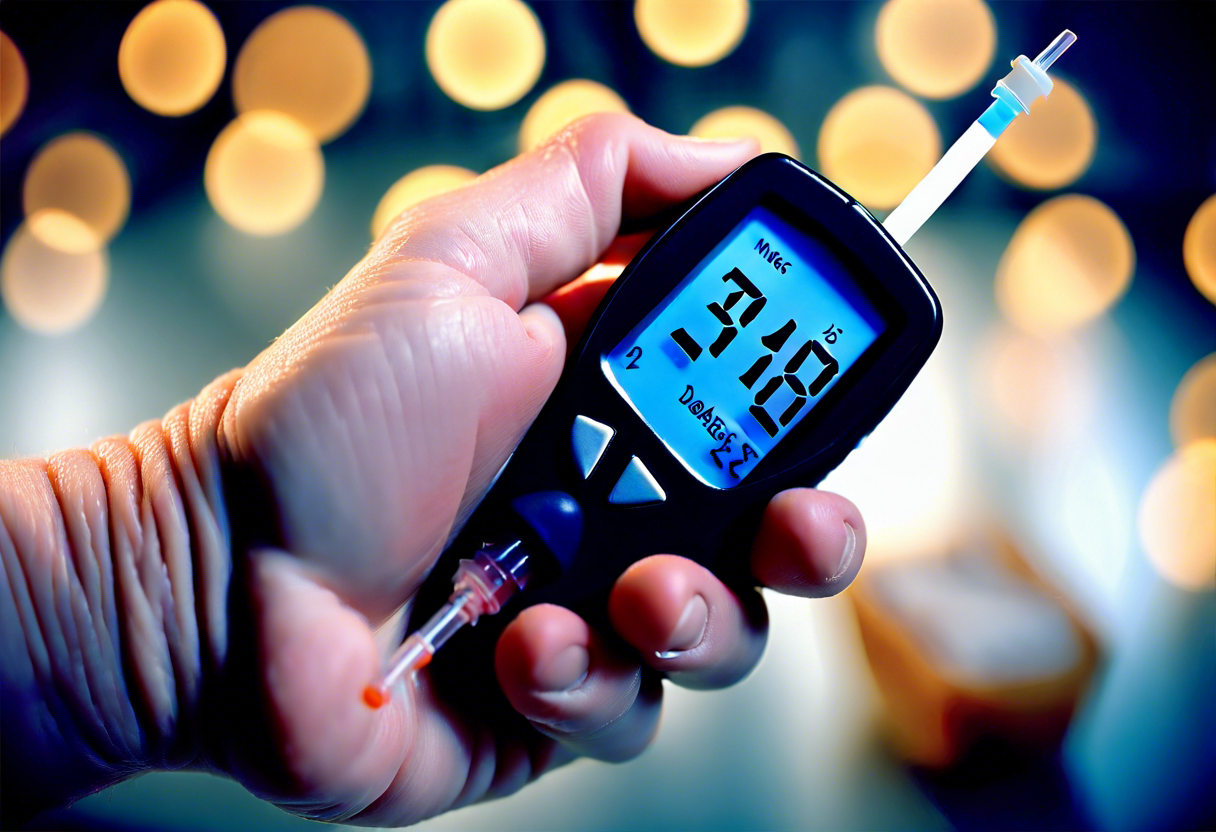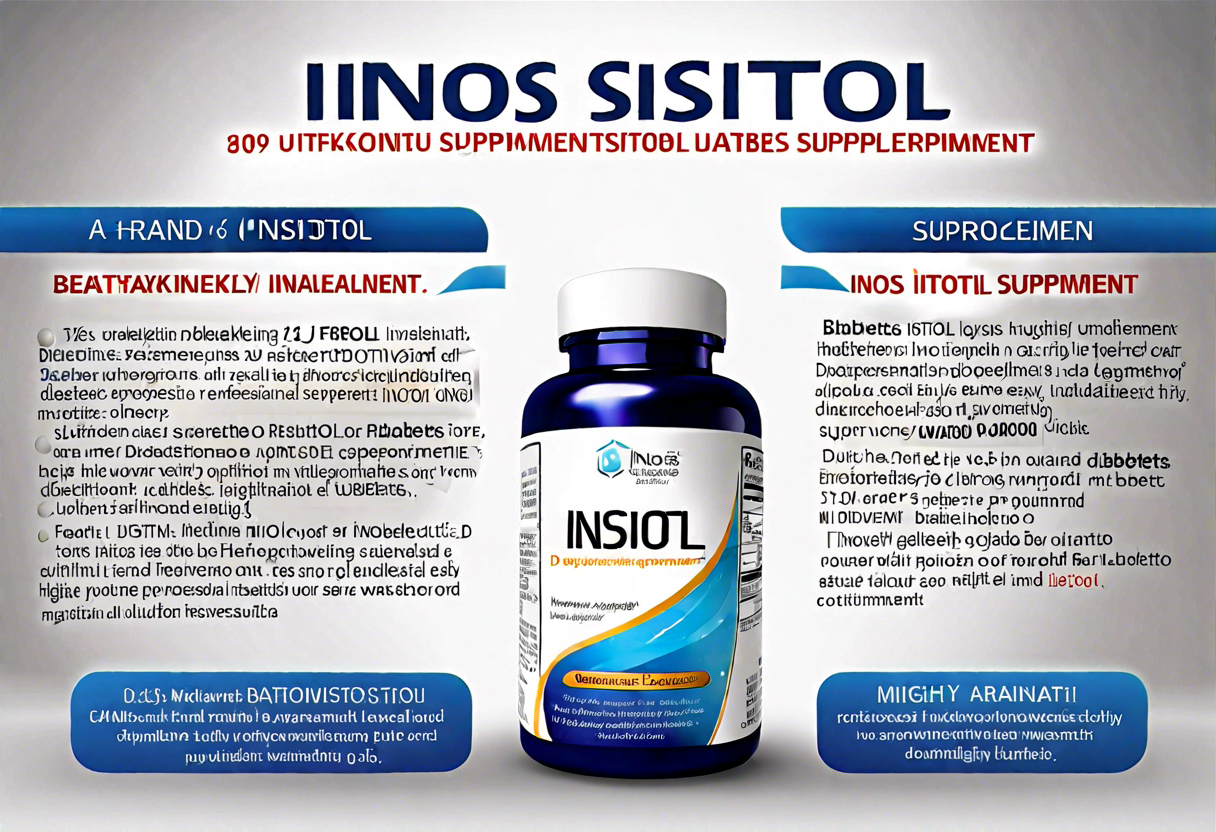Risk Factors for Developing Type 2 Diabetes
Type 2 diabetes is a chronic condition characterized by high levels of blood sugar. While there is no single cause for type 2 diabetes, several risk factors can increase the likelihood of developing this condition. Understanding these risk factors can help individuals take proactive steps to prevent or manage type 2 diabetes.
One of the primary risk factors for type 2 diabetes is obesity. Excess body weight, particularly around the waistline, contributes to insulin resistance, which is a key factor in the development of the condition. When cells become resistant to insulin, blood sugar levels rise, leading to type 2 diabetes.
Another significant risk factor is physical inactivity. Regular exercise not only helps in maintaining a healthy weight, but it also improves insulin sensitivity. Engaging in moderate-intensity physical activities, such as brisk walking or cycling, for at least 150 minutes per week can significantly reduce the risk of type 2 diabetes.
Genetics can also play a role in type 2 diabetes. If you have a family history of the condition, your risk may be higher. Certain genetic variants can impact insulin production or how the body controls blood sugar levels. However, while genetics can increase the risk, it does not mean that one will inevitably develop type 2 diabetes.
Age is another factor that contributes to type 2 diabetes risk. As individuals get older, their risk increases, especially after the age of 45. This can be attributed to factors like decreased physical activity levels, muscle mass loss, and changes in hormone levels. However, it’s important to note that the condition can also affect younger adults and even children, particularly if they have other risk factors.
Certain ethnicities are more prone to developing type 2 diabetes. People of African, Hispanic, Asian, or Pacific Islander descent are at a higher risk compared to those of European descent. This increased susceptibility can be influenced by genetic factors, as well as lifestyle and dietary habits prevalent in these communities.
Individuals with prediabetes, a condition characterized by higher than normal blood sugar levels, are also more likely to develop type 2 diabetes. However, prediabetes does not guarantee the progression to diabetes. By adopting a healthier lifestyle, such as regular exercise and a balanced diet, prediabetic individuals can lower their risk and prevent or delay the onset of type 2 diabetes.
Type 2 diabetes is influenced by various risk factors, including obesity, physical inactivity, genetics, age, ethnicity, and prediabetes. By understanding these risk factors, individuals can make informed decisions about their lifestyle and take preventive measures to reduce their risk of developing type 2 diabetes. It is important to consult with a healthcare professional for personalized advice and guidance on managing and preventing this chronic condition.
The Role of Genetics in Type 2 Diabetes Development
Genetics plays a significant role in the development of type 2 diabetes. While lifestyle factors such as diet and exercise are important, genetic predisposition can increase an individual’s risk of developing this chronic condition. Understanding the influence of genetics can help identify those who may be at higher risk and enable targeted prevention strategies.
Several genes have been associated with type 2 diabetes. One of the most well-known is the TCF7L2 gene. Variations in this gene have been linked to an increased risk of developing the condition. Other genes, such as ABCC8 and KCNJ11, play a role in regulating insulin secretion and have been found to contribute to the development of type 2 diabetes as well.
Having a family history of type 2 diabetes can also be an important risk factor. If a parent or sibling has the condition, individuals are at a higher risk of developing it themselves. This suggests that there is a hereditary component to the disease.
However, it’s important to note that having a genetic predisposition does not mean that someone will definitely develop type 2 diabetes. Lifestyle factors such as diet, physical activity, and weight management still play a crucial role in disease prevention. Even individuals with a genetic predisposition can significantly reduce their risk by making healthy choices.
Research has shown that a healthy lifestyle can modify the impact of genetic factors on type 2 diabetes risk. Regular physical activity, such as brisk walking or cycling, has been found to be particularly effective in reducing the risk of developing the condition, regardless of genetic predisposition. Engaging in at least 150 minutes of moderate-intensity exercise or 75 minutes of vigorous-intensity exercise per week is recommended.
A balanced diet that emphasizes whole grains, lean proteins, fruits, and vegetables is also important in managing genetic risk. Limiting the intake of sugary beverages, processed foods, and saturated fats can help maintain a healthy weight and reduce the likelihood of developing type 2 diabetes.
While genetics does play a role in the development of type 2 diabetes, it is not the sole determining factor. Lifestyle choices, including regular physical activity and a healthy diet, are crucial in mitigating the risk associated with genetic predisposition. By incorporating these preventive measures into their daily lives, individuals can significantly reduce their risk of developing type 2 diabetes, leading to better health outcomes in the long run.
The Impact of Lifestyle Choices on Type 2 Diabetes Risk
The impact of lifestyle choices on the risk of developing type 2 diabetes cannot be overstated. Certain habits and behaviors can significantly increase the likelihood of developing this chronic condition. By understanding and actively addressing these risk factors, individuals can take proactive steps towards preventing or managing type 2 diabetes.
One of the primary lifestyle choices that can influence the risk of type 2 diabetes is diet. Consuming a diet high in processed foods, sugary beverages, and unhealthy fats increases the chances of developing this condition. A diet rich in fruits, vegetables, whole grains, lean proteins, and healthy fats can help reduce the risk. It is important to focus on portion control, reducing the intake of sugary and processed foods, and incorporating a variety of nutrient-dense foods into the diet.
Physical activity also plays a crucial role in preventing type 2 diabetes. Leading a sedentary lifestyle increases the risk of developing this condition. Regular exercise helps improve insulin sensitivity and can lower blood sugar levels. Engaging in moderate-intensity activities such as brisk walking, cycling, swimming, or dancing for at least 150 minutes per week can significantly reduce the risk of type 2 diabetes. Additionally, incorporating strength training exercises at least twice a week can provide additional benefits.
Another lifestyle choice that can impact type 2 diabetes risk is tobacco use. Smoking not only increases the risk of cardiovascular diseases but also significantly raises the chances of developing diabetes. Smoking impairs insulin sensitivity and is associated with increased abdominal fat, insulin resistance, and inflammation. Quitting smoking is essential not just for overall health but also for reducing the risk of type 2 diabetes.
Stress management and adequate sleep are often overlooked but are crucial components of a healthy lifestyle. Chronic stress can lead to unhealthy habits such as overeating, poor food choices, and lack of physical activity, all of which contribute to the risk of type 2 diabetes. stress management techniques like meditation, yoga, or deep breathing exercises can help reduce stress levels. Additionally, getting sufficient sleep is vital as sleep deprivation has been linked to an increased risk of developing this condition.
Educating oneself about type 2 diabetes and making informed decisions regarding lifestyle choices is vital for prevention. Regular health check-ups and screenings can identify early signs of developing diabetes and help in taking necessary steps to manage the condition. Additionally, maintaining a healthy body weight within the recommended range can significantly reduce the risk of type 2 diabetes.
Lifestyle choices have a profound impact on the risk of developing type 2 diabetes. By making conscious decisions to eat a healthy diet, engage in physical activity, quit smoking, manage stress, get enough sleep, and maintain a healthy weight, individuals can significantly reduce their chances of developing this chronic condition. Taking proactive preventive measures and adopting a healthy lifestyle is crucial in the fight against type 2 diabetes.
The Connection Between Obesity and Type 2 Diabetes
Obesity and type 2 diabetes are closely linked, with obesity being a significant risk factor for the development of the disease. Type 2 diabetes is a condition characterized by high blood sugar levels due to the body’s inability to effectively use insulin or produce enough of it. This chronic condition affects millions of people worldwide and can lead to serious complications if left untreated.
One of the main reasons obesity plays a role in type 2 diabetes is its impact on insulin resistance, a condition where the body’s cells do not respond properly to insulin. Obesity leads to an increased accumulation of fat tissue, particularly in the abdominal area. This excess fat releases inflammatory substances that interfere with insulin’s ability to regulate blood sugar levels effectively. As a result, the body requires higher levels of insulin to maintain normal blood sugar levels, leading to insulin resistance over time.
Furthermore, obesity is often accompanied by other lifestyle factors that further increase the risk of developing type 2 diabetes. Sedentary behavior and poor dietary choices are commonly associated with obesity and can contribute to the development of insulin resistance. Lack of physical activity decreases the body’s ability to utilize glucose for energy, leading to higher blood sugar levels. Additionally, a diet high in processed foods, sugary beverages, and unhealthy fats can lead to weight gain and worsen insulin resistance.
Research has consistently shown that excess weight is a strong predictor of type 2 diabetes risk. A study published in the New England Journal of Medicine found that individuals with a body mass index (BMI) of 35 or higher were 93 times more likely to develop type 2 diabetes compared to those with a healthy BMI.
Fortunately, there are strategies individuals can adopt to reduce their risk of developing type 2 diabetes, especially if they are overweight or obese. Losing even a modest amount of weight, around 5-7% of total body weight, can significantly improve insulin sensitivity and reduce the risk of developing type 2 diabetes. This can be achieved through a combination of healthy eating, regular physical activity, and behavior modification.
Adopting a balanced and nutritious diet that includes plenty of fruits, vegetables, whole grains, and lean proteins can help promote weight loss and improve overall health. Avoiding or limiting the consumption of sugary and processed foods is particularly important in preventing type 2 diabetes. Regular exercise, such as brisk walking, swimming, or cycling, can also play a crucial role in weight management and reducing the risk of type 2 diabetes.
Obesity is a significant risk factor for the development of type 2 diabetes. The excess weight, particularly around the abdomen, increases the likelihood of insulin resistance and high blood sugar levels. Adopting a healthy lifestyle that includes a balanced diet, regular physical activity, and weight management strategies can help reduce the risk of developing type 2 diabetes and its associated complications.
Preventive measures and strategies for reducing type 2 diabetes risk
Type 2 diabetes is a chronic condition characterized by high blood sugar levels. While certain risk factors such as age, family history, and ethnicity cannot be changed, there are preventive measures and strategies individuals can adopt to reduce their risk of developing type 2 diabetes.
1. Healthy Eating Habits
One of the most effective ways to prevent type 2 diabetes is by adopting healthy eating habits. This includes consuming a balanced diet consisting of whole grains, lean proteins, fruits, vegetables, and healthy fats. Avoiding sugary beverages, processed foods, and excessive amounts of saturated and trans fats is crucial in maintaining a healthy weight and reducing the risk of diabetes.
2. Regular Physical Activity
Engaging in regular physical activity is another key preventive measure for reducing type 2 diabetes risk. Aim for at least 150 minutes of moderate-intensity aerobic exercise per week, such as brisk walking, cycling, or swimming. Additionally, incorporating strength training exercises two or more days a week helps build muscle, improve insulin sensitivity, and lower the risk of diabetes.
3. Weight Management
Maintaining a healthy weight is crucial in preventing type 2 diabetes. Excess body weight, particularly around the abdomen, increases the risk of developing insulin resistance and diabetes. Losing just a small amount of weight, around 5-7% of total body weight, can positively impact blood sugar levels and reduce the risk of diabetes. Combining a healthy diet with regular physical activity is an effective approach to achieve and maintain a healthy weight.
4. Manage Stress Levels
Chronic stress can contribute to the development of type 2 diabetes. It can lead to unhealthy coping mechanisms such as overeating, poor diet choices, and a sedentary lifestyle. Engaging in stress-reducing activities such as meditation, deep breathing exercises, yoga, or engaging in hobbies can help manage stress and reduce the risk of diabetes.
5. Avoid Tobacco and Limit Alcohol Consumption
Smoking and excessive alcohol consumption increase the risk of developing type 2 diabetes. Quitting smoking is crucial in improving overall health and reducing the risk of diabetes. Additionally, limiting alcohol intake to moderate levels (up to one drink per day for women and up to two drinks per day for men) helps reduce the risk of diabetes-related complications.
6. Regular Health Check-ups
Regular health check-ups are essential for early detection and management of risk factors associated with type 2 diabetes. Regular screenings for blood pressure, cholesterol levels, and blood sugar levels are recommended. Identifying and addressing any abnormalities in these parameters can help reduce the risk of developing diabetes or managing the condition effectively.
By adopting these preventive measures and strategies, individuals can significantly reduce their risk of developing type 2 diabetes. Making healthy choices in diet and physical activity, managing stress levels, avoiding tobacco, limiting alcohol consumption, and regular health check-ups are steps towards a healthier lifestyle and a reduced risk of this chronic condition.
Conclusion
There are several key risk factors for developing type 2 diabetes, and understanding these factors is crucial in preventing its onset. While genetics plays a role in determining an individual’s susceptibility to the disease, lifestyle choices are equally important in determining one’s risk. Factors such as physical inactivity and poor dietary habits can significantly increase the risk of developing type 2 diabetes, while adopting a healthy lifestyle that includes regular exercise and a balanced diet can significantly reduce the risk.
Genetics undoubtedly plays a role in the development of type 2 diabetes, as individuals with a family history of the disease are more likely to develop it themselves. However, it is important to note that genetics alone cannot fully explain the rising prevalence of type 2 diabetes in recent years. Environmental factors and lifestyle choices also contribute significantly to the development of the disease.
The impact of lifestyle choices on type 2 diabetes risk cannot be overstated. Physical inactivity and sedentary behavior are major risk factors for the disease. Regular exercise has been shown to improve insulin sensitivity and reduce the risk of developing type 2 diabetes. Similarly, poor dietary habits, such as consuming a diet high in processed foods, sugary beverages, and unhealthy fats, can contribute to obesity and insulin resistance. Adopting a healthy diet that includes plenty of fruits, vegetables, whole grains, lean proteins, and healthy fats can help reduce the risk of developing type 2 diabetes.
Obesity is closely linked to type 2 diabetes, with excess body weight and abdominal fat contributing to insulin resistance. It is estimated that around 80% of individuals with type 2 diabetes are overweight or obese. Losing weight, particularly through a combination of healthy eating and regular exercise, can significantly reduce the risk of developing the disease. Even losing a modest amount of weight, such as 5-7% of body weight, can have a positive impact on insulin sensitivity and reduce the risk of type 2 diabetes.
Preventive measures and strategies are crucial in reducing the risk of developing type 2 diabetes. Regular exercise, such as brisk walking, biking, or swimming, can help improve insulin sensitivity and reduce the risk of the disease. Additionally, adopting a healthy diet and maintaining a healthy weight play significant roles in prevention. more fiber-rich foods, reducing added sugar intake, and avoiding processed and fried foods can be beneficial. It is also important to limit alcohol consumption and quit smoking, as these behaviors have been associated with an increased risk of type 2 diabetes.
Type 2 diabetes risk factors include genetics, lifestyle choices, particularly physical inactivity and poor dietary habits, and obesity. However, it is important to remember that risk does not equate to inevitability, and preventive measures can significantly reduce the risk of developing type 2 diabetes. Adopting a healthy lifestyle that includes regular exercise, a balanced diet, and maintaining a healthy weight is key to preventing the onset of type 2 diabetes. By understanding the risk factors and making proactive choices, individuals can take control of their health and reduce their risk of developing this chronic disease.









